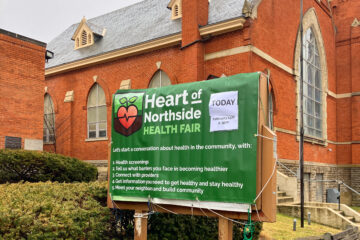
Heart disease has been the number one killer of American men and women at least since the 1920s. For the past few decades we were seeing improvements in life expectancy, mostly because of improvements in outcomes from heart disease. Sadly, life expectancy has gone down for the second year in a row since we have been measuring it. While much of the decrease in life-expectancy was due to Covid-19 related deaths, the second most common cause was from an increase in heart disease.
The term “heart disease” can mean many things, but the most common cause of death due to heart disease is from blockage of blood flow to the heart muscle, also called “coronary artery disease”. This is important because coronary artery disease can be prevented.
Arteries are the blood vessels that supply blood and nutrients to the all of the muscles and tissues of the body. When we don’t get enough blood flow to any muscle, this can cause pain and cramping in the muscle. Anyone who has run up a flight of stairs or for long distances might have experienced this.
The heart is a specialized kind of muscle that circulates blood through the body through coordinated and rhythmic pumping action. A normal heart can beat 42,048,000 beats in a year! The heart muscle needs its own blood supply, like any muscle, so that the can pump efficiently.
When your heart muscle isn’t getting enough blood flow, you can get pain and cramping of the heart muscle, too. The pain in the heart that is caused by poor blood flow is called “angina”. Angina can feel like pressure or tightness across the chest, or pain in the back, arms, or jaw. Poor blood flow to the heart muscle can cause “cramping” which interferes with normal pumping of the heart, which can lead to death.
All arteries have a delicate inner lining (endothelium) and a muscular middle layer. Over the course of our lives, fatty material can build up in between these layers through a process called “atherosclerosis”. This process can occur in all of the arteries throughout our body. When it takes place in coronary arteries, it’s called coronary atherosclerosis (aka “coronary artery disease”). The atherosclerosis can get so bad in the coronary arteries that it can prevent blood from getting to the heart muscle entirely!
The most common problems that can lead to excess buildup of atherosclerosis in the coronary arteries are: high blood pressure, smoking, and high blood cholesterol.
Blood pressure is produced by the force the blood in our bodies exerts on the walls of the arteries. When this pressure is too high, we call it “hypertension”.
Hypertension causes damage to the inside lining of the arteries (remember, it’s pretty delicate), and this allows the process of atherosclerosis to occur.
Many of the chemicals in tobacco smoke can cause direct injury to the inner lining of arteries, but can also raise blood pressure – both of these accelerate atherosclerosis. This may also be true of smoke from vaping and marijuana, but we are still learning about the impact of these alternatives to tobacco smoke.
Cholesterol is a major component of atherosclerotic material, so you can imagine that if cholesterol is very high, there’s more material that can be deposited in the arterial walls.
Being overweight contributes to this process, we think, because it can increase inflammation throughout the body, which accelerates the atherosclerotic processes. Being overweight may also lead to diabetes and hypertension, both of which increase atherosclerosis.
You now understand some very important things about the most common cause of death for women and men in America, coronary artery disease.


